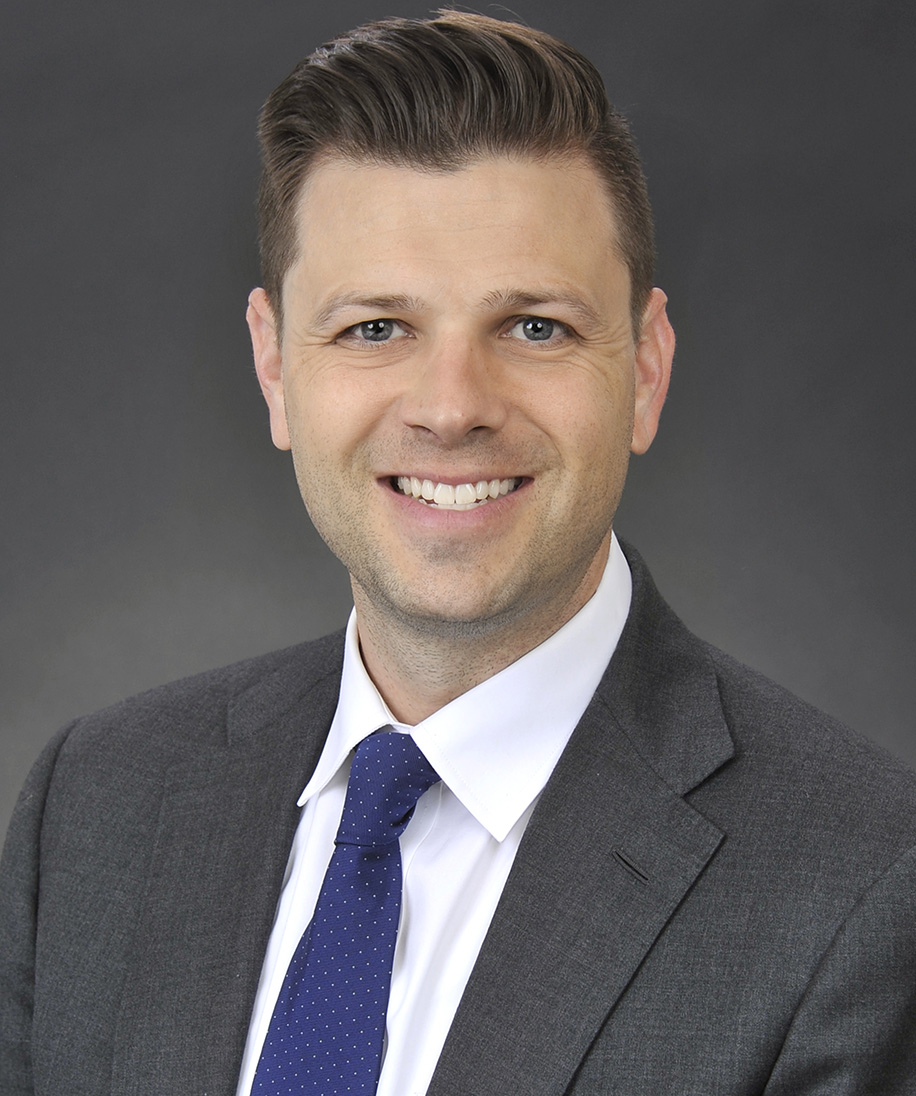Client Alert
Understanding The DOL’s Proposed Regulations On Paid Sick Leave For Federal Contractors
March 07, 2016
By The Federal Contractor Compliance Practice Group and Wage and Hour Practice Group
Introduction
Paid sick leave has been a hotbed for legislative activity. A number of states and localities—including California, Connecticut, Massachusetts, Oregon, Washington, D.C., New York City, Philadelphia, San Francisco, and Seattle—already have imposed paid sick leave obligations on employers. On February 25, 2016, the U.S. Department of Labor’s Wage and Hour Division (“DOL”) released a notice of proposed rulemaking (“NPRM”) implementing Executive Order 13706 (the “Order”), which requires certain government contractors to provide paid sick leave to certain employees at certain times. The DOL anticipates that these new rules will provide paid sick leave to 437,000 employees who currently get no such benefit, and will augment the leave of about 400,000 more workers, according to U.S. Secretary of Labor Thomas Perez.[1]
The new requirements will apply to contracts entered on or after January 1, 2017. Contractors who disregard the new requirements can be subject to debarment, among other penalties, so it is important that contractors understand the proposed rules and plan to ensure compliance. Contractors will have to compare these new requirements with any existing state or local paid leave laws. The proposed rule permits contractors to satisfy their obligations by providing paid sick leave that fulfills the requirements of a State or local law, but only so long as the paid sick leave is accrued and may be used in a manner that meets or exceeds the requirements of the proposed regulations.
As we informed you in our prior Alert, the Executive Order:
Requires covered federal contractors and subcontractors to allow their employees to earn not less than one hour of paid sick leave for every 30 hours worked.
Allows contractors to limit sick leave accrual to 56 hours (i.e., 7 days) per year, but requires contractors to carry over employee’s unused leave into the next year.
Does not require contractors to pay out accrued but unused sick leave when an employee separates employment, but requires contractors to reinstate an employee’s accrued sick leave if an employee is rehired by a covered contractor within 12 months of separation.
Allows employees to use their paid sick leave not only to care for their own physical or mental health but also to care for sick children, parents, spouses or partners, and for circumstances related to domestic violence, sexual assault, or stalking.
As explained further below, the DOL’s proposed rule:
Gives additional guidance about the formula for accruing paid sick leave (including what counts as an “hour worked” for purposes of the rule and what accrual increments are permitted);
Requires employers to inform employees, monthly, of their accrued sick leave;
Sets forth the circumstances under which contractors can deny requests for paid sick leave and imposes obligations on contractors who deny employee requests;
Limits the circumstances when employers can request documentation to support a request for paid sick leave;
Imposes a number of recordkeeping requirements, including rules about what paid sick leave accrual information must be provided to employees and what documentation must be provided to the government upon completion of a contract;
Prohibits contractors from interfering with an employee’s accrual or use of paid sick leave time or discriminating against employees for exercising their rights under the Order; and
Sets forth an enforcement mechanism.
Coverage
The Order applies to four types of contracts with the federal government: (1) procurement contracts covered by the Davis-Bacon Act; (2) service contracts covered by the Service Contract Act; (3) concession contracts[2]; and (4) contracts in connection with federal property that are related to offering services for federal employees, their dependents, or the general public.[3] Within these categories, the Order applies only where the wages paid to the contractor’s employees for work related to the contract are governed by the Fair Labor Standards Act, the Davis-Bacon Act, or the Service Contract Act.
The Order applies only to contracts that:
Result from a solicitation issued on or after January 1, 2017;
Are awarded outside the solicitation process on or after January 1, 2017;
Are renewed other than by the exercise of a unilateral pre-negotiated option by the federal government;
Are extended by means other than a term in the contract as of December 31, 2016, which provides for a short-term limited extension; or
Are amended pursuant to a modification that is outside the scope of the contract.
Coverage Exceptions
With respect to contracts covered by the Service Contract Act or the Davis-Bacon Act, the Order applies to prime contracts only at the thresholds specified in those statutes. For procurement contracts where employee wages are governed by the Fair Labor Standards Act, the Order applies only when the contract exceeds the micro-purchase threshold of $3,000 described in 41 U.S.C. § 1902(a). The Order applies to all other covered contracts regardless of the contract value. The Order does not apply to contracts or portions of contracts for which the performance takes place outside of the United States.
Some contracts that may otherwise fall within the covered categories above are specifically excluded from the Order’s coverage, including: (1) grants; (2) contracts and agreements with Native American tribes under Public law 93-638, as amended; (3) procurement contracts for construction that are not subject to the Davis-Bacon Act; (4) contracts for services not expressly covered by the NPRM that are exempted from coverage under the Service Contract Act or its implementing regulations; and (5) contracts for the manufacturing or furnishing of materials, supplies, articles, or equipment to the federal government.
Paid Sick Leave Accrual
The NPRM’s accrual requirements apply only to employees who are directly engaged in performing the specific work called for by the contract or who otherwise spend more than 20% of their hours in a workweek performing work duties in connection with the performance of the covered contract.
Accrual Formula: Under the proposed rules, covered employers must accrue one hour of paid sick leave for every 30 hours worked by employees on or in connection with covered contracts (i.e., the “accrual method”). Alternatively, contractors could provide an employee with 56 or more hours of paid sick leave at the beginning of each accrual year instead of calculating accrued paid sick leave time based on covered hours worked (i.e., the “lump sum method”).
Accrual Increment: Contractors are not required to allow employees to accrue sick leave in increments smaller than one hour, but any fraction of the 30 hours of covered work necessary to accrue an hour of paid sick leave must carry over to subsequent workweeks within the same accrual year. For example, if an employee spends five hours on covered work each week, he or she need not accrue any paid sick leave time after any of the first five workweeks, but must accrue one full hour of paid sick leave at the completion of the sixth workweek.
Accrual Year: An accrual year is any 12-month period beginning (1) when the employee begins to perform covered work; or (2) on any date that the contractor sets. If a contractor opts to select a fixed date as the start of its accrual year, it must apply the same date to all employees on all covered contracts.
Calculation of Hours Worked: Contractors must include as hours worked all time for which an employee is or should be paid, including paid time-off and paid sick-leave. For employees who work on covered contracts and have duties not covered by the Order, contractors must accurately record the employees’ covered and non-covered hours. For covered employees who are exempt, contractors may calculate paid sick leave accrual by tracking the employees’ actual hours worked, or by assuming that the employees spend 40 hours per week working in connection with a covered contract. If such an employee regularly works fewer than 40 hours per week on a covered contract, the contractor may allow the employee to accrue paid sick leave based on the employee’s typical number of hours worked on covered contracts per workweek.
Tracking of Accrued Sick Leave: The NPRM requires contractors to calculate accrued paid sick leave every workweek and inform employees each month, in writing of their total accrued paid sick leave. Contractors must also provide a written tally of accrued paid sick leave when an employee asks for the tally, requests sick leave, separates from employment, or has his or her paid sick leave reinstated upon rehire.
Caps on Sick Leave:[4] Contractors may cap their employees’ paid sick leave accrual at 56 hours in each accrual year. Accrued and unused paid sick leave (or unused “lump sum” hours) generally must be carried over to the next accrual year. Paid sick leave time that is carried over cannot count against the annual accrual cap. Whether a contractor may limit the total paid sick leave available for an employee’s use at any given time depends on whether it uses the accrual or lump sum method. Contractors that use the accrual method may limit the total paid sick leave available for an employee’s use to 56 hours at any given time. On the other hand, contractors that use the lump sum method may not limit the amount of paid sick leave that an employee can use at any given time, but they may limit the amount of paid sick leave that an employee can carry over to the next accrual year to 56 hours.
Reinstatement of Accrued Sick Leave upon Rehire: Contractors need not pay employees for accrued but unused paid sick leave time upon termination, but they must reinstate all accrued but unused paid sick leave time for any employee who is rehired by the contractor or a successor within 12 months after a job separation. If a contractor chooses to pay an employee for accrued but unused paid sick leave, that payment will not reduce the contractor’s obligation to reinstate unused paid sick leave time if the employee is rehired.
Use of Paid Sick Leave
Employees may only use paid sick leave to be absent from work on or in connection with a covered contract. It may be used by employees for the following reasons:
Physical or mental illness, injury or medical condition of the employee;
Obtaining diagnosis, care, or preventative care from a health care provider;
Caring for the employee’s child, parent, spouse, domestic partner[5], or anyone else related by blood or affinity whose close association with the employee is the equivalent of a family relationship; or
Domestic violence, sexual assault, or stalking, provided the time away from work is for the purposes described in the first two bullets above or to obtain additional counseling, seek relocation, seek assistance from a victim services organization, take related legal action or assist someone described in #3 above in engaging in any of these activities.
Rules regarding Compensation for Use of Sick Leave: Employees’ use of paid sick leave time must be calculated in increments of at least one hour. Contractors cannot reduce an employee’s accrued paid sick leave by more than the amount of time the employee actually takes off and would have worked absent the need for leave, however. Contractors cannot require employees to take more leave than necessary to address the circumstances justifying the leave. Employees on leave are entitled to receive the same pay and benefits they would have received were it not for the leave. Contractors must compensate employees for time spent on paid sick leave no later than one pay period after the end of the regular pay period in which the paid sick leave was used.
Requests for Paid Sick Leave
Requests to use paid sick leave may be oral or written. They must include information sufficient to inform the contractor that the employee is seeking leave for an appropriate reason. Employees must request leave seven days in advance or as soon as practicable, which the NPRM explains is generally the day the employee learns of the need to take leave or the following business day.
Contractors must respond to requests as soon as practicable under the circumstances, which the NPRM indicates will often be within a few hours of the request. The NPRM contemplates, however, that in some instances a contractor may not be able to respond for a few days. For example, a contractor may need a few days to verify whether the employee will be working on or in connection with a covered or non-covered contract during the requested time.[6]
Contractor Responses – Form and Criteria
A contractor may communicate its approval of the employee’s request orally or in writing, but any response must include a written notice of the amount of paid sick leave the employee has available to date. Contractors must communicate the denial of a paid sick leave request in writing with an explanation for the denial. Although the NPRM does not provide an exhaustive list, denial is appropriate if, for example, the employee:
Did not provide sufficient information about the need for paid sick leave;
Provided a reason that is inconsistent with the appropriate uses;
Did not indicate when the need for paid sick leave would arise;
Requested leave during a time when the employee is scheduled to perform non-covered work; or
Will not have accrued sufficient paid sick leave time by the requested date of leave.[7]
If an employee will not have sufficient paid sick leave available by the requested date, the contractor should only deny the request to the extent that it exceeds the employee’s available paid sick leave time. A denial for insufficient information must also provide the employee an opportunity to submit a corrected request. Finally, if a contractor denies a request because the employee was scheduled to work on non-covered work during the requested time, the contractor must support its denial by records adequately segregating the employee’s time spent on covered and non-covered work.
Certification and Supporting Documentation
The contractor may only require certification from a health care provider to verify the medical need for paid sick leave if an employee requests three or more consecutive full days of paid sick leave. The contractor must keep such information confidential, however.[8] For requests related to domestic violence, sexual assault, or stalking, contractors may only require documentation containing the minimum information necessary to establish a need for the leave. Contractors may also require reasonable documentation to establish that the individual for whose benefit the employee is requesting leave is sufficiently related to the employee to warrant the use of leave under the Order. This documentation may, for example, take the form of a simple written statement, a birth certificate, or a court order.[9]
Time for Employee to Provide Documentation: A contractor may only request certification or documentation if it notifies the employee before he or she returns to work that certification or documentation will be required. Contractors must allow employees at least 30 days from the first day of the three or more consecutive full days of leave in which to provide certification or documentation. While contractors wait for or review certification or documentation, they must treat the request as valid. Contractors may retroactively deny the request within 10 calendar days of the deadline for receipt of the certification or documentation, or within 10 days of receiving insufficient certification or documentation, whichever occurs first. When a contractor retroactively denies a request, it may recover the value of pay and benefits provided during the time away from work, provided doing so is not otherwise prohibited by law.
Contact with Health Care Provider to Verify Supporting Documentation: Contractors may contact the individual who provided the certification or documentation, but only to authenticate the document or clarify its contents. They may not request additional details, seek a second opinion, or otherwise question the substance of the documents. Only Human Resource professionals, leave administrators, or management officials can make this contact, and direct supervisors are specifically prohibited from doing so unless there is no other appropriate individual who can.[10] As always, contractors will need to remain mindful of and adhere to all HIPPA laws and regulations.
Interference and Discrimination
The NPRM prohibits contractors from interfering in any manner with an employee’s accrual or use of paid sick leave time. Specific examples of prohibited interference include:
Miscalculating the amount of paid sick leave an employee has accrued;
Denying or unreasonably delaying a response to a proper request to use paid sick leave;
Discouraging an employee from using paid sick leave;
Reducing an employee’s accrued paid sick leave by more than the amount of such leave used;
Transferring the employee to work on non-covered contracts to prevent the accrual or use of paid sick leave;
Disclosing confidential information provided in certification or other documentation provided to verify the need to use paid sick leave; and
Making the use of paid sick leave contingent on the employee’s finding a replacement worker or the fulfillment of the contractor’s operational needs.[11]
The NPRM also prohibits contractors from discriminating against any employee for: (1) using or attempting to appropriately use paid sick leave under the Order; (2) filing a complaint, initiating a proceeding, or otherwise asserting any right or claim under the Order; (3) cooperating in an investigation or testifying in a proceeding under the Order; or (4) informing anyone else about his or her rights under the Order.[12] The NPRM specifically prohibits contractors from considering the use or attempted use of paid sick leave time under the Order as a negative factor in employment actions such as hiring, promotions, disciplinary actions or a no fault attendance policy.
Employees cannot waive their rights under the Order, and the NPRM specifically prohibits contractors from inducing employees to do so.
Other Contractor Requirements
Contract Clause
The NPRM requires adherence to the Order as a condition of payment for all covered contracts. Contractors must include the applicable contract clause in all covered subcontracts and must require subcontractors as a condition of payment to include the clause in any lower-tier subcontracts. Contractors and subcontractors are responsible for their respective subcontractors’ compliance.
Recordkeeping
Contractors and covered subcontractors must maintain records during the course of covered contracts and for three years thereafter. These records must contain the following information for each employee who performed work in connection with a covered contract:
Name, address, and Social Security number;
Occupation or classification;
Rate(s) of wages paid;
Number of daily and weekly hours worked;
Deductions;
Total wages paid during each pay period;
Notifications of the employee’s accrued amount of paid sick leave;
Requests to use paid sick leave;
Dates and amounts of paid sick leave used;
Written denials of employee’s requests to use paid sick leave, with explanations;
Records related to certification and documentation;
Any other records showing any tracking of or calculations related to accrual or use;
Any certified list of the employee’s unused paid sick leave provided to a contracting officer;
Any certified list of the employee’s unused paid sick leave received from the contracting agency; and
The covered contract.[13]
Additionally, contractors who intend to distinguish between an employee’s covered and non-covered hours work must keep records or other proof reflecting those distinctions. Without these records, a contractor may not deny requests or prevent an employee from accruing paid sick leave time on the basis that the requested leave time or hours spent accruing paid sick leave are not covered work. Contractors need not keep records of hours worked by employees for whom the contractor is both: (a) not otherwise required to keep such records; and (b) relying on the optional assumption that the employee spends 40 hours per week working in connection with a covered contract.
Documentation upon Completion of Contract: Upon completion of a covered contract, contractors must provide to the contracting officer a certified list of all employees entitled to paid sick leave under the Order who worked on or in connection with the covered contract or any covered subcontract at any point during the 12 months preceding the completion date. The list must include three pieces of information:
The employees’ names;
Date of each employee’s separation from the contract or subcontract, if applicable; and
Amount of paid sick leave each employee had available as of the date of completion or the date the employee separated from the covered contract or subcontract.[14]
Dissemination of Notice
The proposed rule requires contractors to notify all employees performing work on or in connection with covered contracts about the Order’s paid sick leave requirements by posting a notice in a prominent and accessible place in the worksite. Contractors who customarily post notices electronically may satisfy this requirement through electronic posting, provided that the electronic posting is prominently displayed on any web site that is maintained by the contractor and customarily used for notices to employees about the terms and conditions of their employment.
Proposed Enforcement Mechanisms
The proposed regulations authorize any employee, contractor, labor organization, trade organization, contracting agency, or other person or entity to complain to any office of the Wage and Hour Division for any alleged violation of the Order. The Wage and Hour Division may resolve complaints through conciliation or may conduct an investigation. The Division also may initiate its own investigation without a formal complaint. As part of its investigation, the Division could visit a contractor’s site to interview employees, inspect and copy documents (including contract documents and payrolls, if needed), and request production of any other documents or evidence deemed necessary to determine whether a violation occurred.
Remedies for Interference or Discrimination
Upon finding that a contractor interfered with an employee’s accrual or use of paid sick leave, or discriminated against an employee, the Division would request that the contractor remedy the violation. If the contractor does not, the Division would direct the contractor to provide appropriate relief to the impacted employee(s), including lost pay and/or benefits from the violation, other actual monetary losses, equitable relief, reinstatement, promotion, or liquidated damages in an amount equal to any monetary relief. However, the Division could reduce an award of liquidated damages if a contractor violated the Order or proposed regulations in good faith, and had reasonable grounds for believing that it had not committed a violation. The Division could also direct a contracting agency to withhold payment due on the contract until the contractor has paid the appropriate monetary relief.
Remedies for Recordkeeping Violations
If a contractor fails to produce required records upon request, the contracting officer can suspend any further payment or advance of funds on the contract until the contractor has remedied the violations.
Debarment
If the Secretary finds that a contractor disregarded its obligations under the Order or proposed regulations, that contractor and its responsible officers, and any firm, corporation, partnership or association in which the contractor or responsible officers have an interest, will be ineligible for any contract or subcontract covered by the Order for up to three years. A contractor may contest the Secretary’s finding through a hearing before an administrative law judge, which the proposed regulations outline.[15]
Interaction with Current Paid Time Off Policies and Other Laws
Federal contractors with existing paid time off policies (if provided in addition to the fulfillment of Service Contract Act or Davis-Bacon Act obligations[16]) will satisfy the proposed regulations if paid time off is available to all covered employees, may be used for all of the purposes covered by the proposed regulations, and is provided in a manner and an amount sufficient to comply with the accrual, carryover, reinstatement, payment for unused leave, and other rules set forth above. Federal contractors should carefully review existing paid time off policies to ensure compliance with the proposed regulations’ numerous technical rules.
Compliance with the proposed regulations will not excuse noncompliance with or supersede any applicable Federal, State or local law or collective bargaining agreement providing greater paid sick leave or other leave rights. For example, paid sick leave provided pursuant to the proposed regulations will have no effect on a contractor’s obligations under the Family and Medical Leave Act (“FMLA”), but paid sick leave may be substituted for, and run concurrently with, unpaid FMLA leave under the same conditions as other paid time off pursuant to FMLA regulations.
Contractors can, however, satisfy their obligations under the proposed regulations by providing paid sick leave that fulfills the requirements of a State or local law, provided the paid sick leave is accrued and may be used in a manner that meets or exceeds the requirements of the proposed regulations.[17] California, Connecticut, Massachusetts, Oregon and Washington, D.C. currently have laws requiring paid sick leave for certain employees. A number of cities also have passed sick leave laws, including New York City, Philadelphia, San Francisco and Seattle, among others. As currently drafted, the proposed rules include requirements that go beyond many state and local laws. For example, California law does not require unlimited carryover of accrued but unused leave time. So compliance with the minimum requirements of these state and local ordinances may not bring a contractor into compliance with the proposed regulations.
While the proposed regulations mirror many of the provisions in state and local paid sick leave laws, there are important differences among the state and local laws, as well as between the state and local laws and the proposed regulations. Depending upon the state or local law, key areas of difference may include:
Who is covered;
The purposes for which paid sick leave can be used, including the definition of family members;
The rate of paid sick leave accrual, and annual limitations on accrual, use and carryover;
The rate of pay for sick leave time; and
The employer’s notice and recordkeeping obligations.
Some employees may be covered by multiple laws concurrently, or covered by different laws at different points throughout the year depending on their jobs and work locations.
Conclusion
Federal contractors certainly should examine their policies in light of the proposed regulations, but all employers operating in jurisdictions with paid sick leave laws should review their policies for compliance with state and local laws. Paul Hastings employment law attorneys are available to assist with what can be very complicated, multi-jurisdictional review projects, and help draft policies to cover your workforce.
***
[1] http://www.dol.gov/featured/PaidLeave/paid-sick-leave-federal-contract.pdf
[2] The NPRM defines a concession contract as one under which the federal government grants a right to use federal property for furnishing services. The Order applies to all concession contracts with the federal government, including contracts excluded under the Service Contract Act. Covered concessions contracts include without limitation those whose principal purpose is to furnish food, lodging, automotive fuel, souvenirs, newspaper stands, and recreational equipment.
[3] Covered contracts in connection with federal property include leases of, and licenses to use, federal property, space, and facilities. The Order does not apply to contracts subject to the Davis-Bacon Related Acts which do not directly procure construction services. The Order does, however, cover both procurement and non-procurement contracts subject to the Service Contract Act.
[4] 81 Fed. Reg. 9662 (Feb. 25, 2016).
[5] The NPRM defines a domestic partner as an adult in a committed relationship with another adult. A committed relationship includes marriages and civil unions, or any relationship in which the employee and partner are each other’s sole domestic partner and share responsibility for a significant measure of each other’s common welfare and financial obligations. 81 Fed. Reg. 9659 (Feb. 25, 2016).
[6] 81 Fed. Reg. 9663 (Feb. 25, 2016).
[7] Id.
[8] Contractors must maintain records related to medical histories, domestic violence, sexual assault, or stalking as confidential records in separate files from the usual personnel files. To the extent that records maintained by contractors pursuant to the Order are covered by the confidentiality requirements of the Genetic Information Nondiscrimination Act or the Americans with Disabilities Act, contractors must also adhere to the requirements of those laws and their implementing regulations. A contractor may not disclose to anyone any certification or documentation used to verify the need for paid sick leave in excess of three consecutive full days related to domestic violence, sexual assault, or stalking unless the employee consents or the disclosure is required by law.
[9] 81 Fed. Reg. 9663 (Feb. 25, 2016).
[10] Id.
[11] 81 Fed. Reg. 9664 (Feb. 25, 2016).
[12] Id.
[13] 81 Fed. Reg. 9665-66 (Feb. 25, 2016).
[14] 81 Fed. Reg. 9666 (Feb. 25, 2016).
[15] See Subpart E, 81 Fed. Reg. 9668 (Feb. 25, 2016).
[16] Paid sick leave under the Order is in addition to a contractor’s obligations under the Service Contract Act and Davis-Bacon Act, and a contractor may not receive credit toward its prevailing wage or fringe benefit obligations under those Acts for any paid sick leave provided pursuant to the Order. However, a contractor may count the value of any paid sick time provided in excess of the requirements of the Order towards its requirements under those Acts.
[17] 81 Fed. Reg. 9663-64, § 13.5(f)(4) (Feb. 25, 2016).
Contributors





